Roots of Style: Many Cultures Make Their Marks on Mediterranean Design
While classical architecture and medieval customs established connections between the northeastern U.S., England and Northern Europe, another architectural expression was developing in Mexico and the southwestern U.S. through Spanish colonialism.
Not only did Mediterranean influences form the definition of design in this region, but Latin American and Native American cultures merged, resulting in a still-varying and wonderfully rich fashion. Certain building techniques were developed concurrently in North Africa, Spain and North America.
For example, earthen or mortar-formed flat-roofed structures supported by heavy timbers where rainwater is directed through spouts in a wall with a parapet are one kind. Spanish colonists brought other knowledge to the Americas, such as wood-framed pitched roofs covered with clay tiles. With the eventual exploration and establishment of missions in the 18th century, Spain solidified its cultural influence over the region.
At the time the Spaniards arrived, Native Americans were building adobe and stacked-stone walls, often covered with stucco, for their dwellings. Few structures have survived, partly due to the sparsely populated and scattered settlements of those times but also because adobe structures must be inhabited and maintained to remain intact; they dissolve if uninhabited. Though there are deep roots to Spanish-style architecture in the United States, established styles did not appear until the late 19th century, while others began in the 20th century.
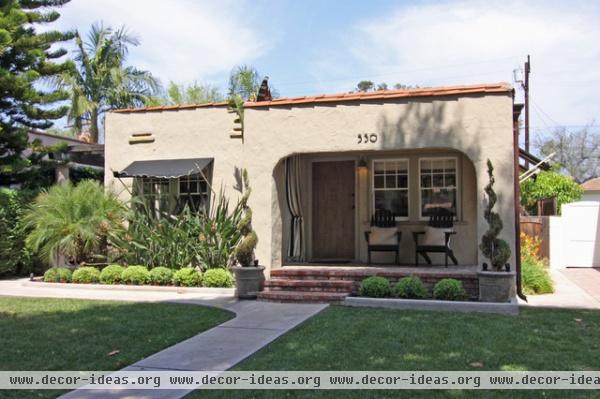
Spanish Colonial
By the late 1800s, Spanish-style houses were wood framed, though flat roofs with parapets and stucco walls retained a clear link to their ancestry. The fashion of this particular house became popular throughout the southwestern U.S. in the 1920s and 1930s, and can best be classified as Spanish colonial revival or Spanish eclectic.
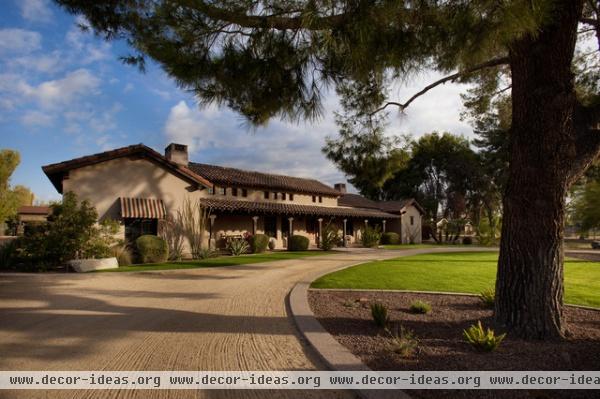
Spanish colonial architecture had rooms arranged in rows: L shapes, U shapes and courtyard versions. Covered porches with shed-roof forms, supported by heavy timber or hewn wood posts with decorative brackets, lined private facing spaces. This house exhibits these details with a front-facing porch arrangement, which became common in newer structures.
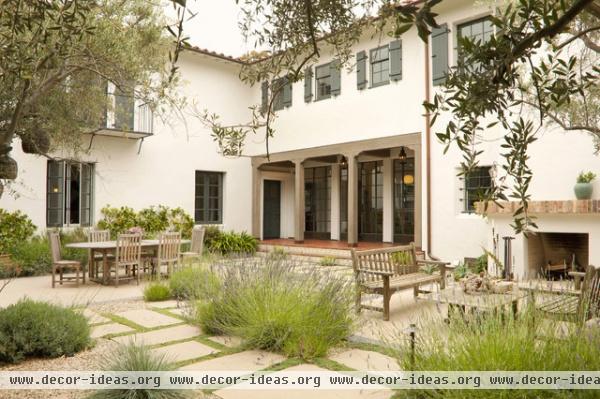
Though most original Spanish colonial dwellings were one level, two-story versions of this fashion became increasingly popular in the 20th century. This newer house surrounds a private courtyard, as did some 19th-century examples. Notice the detail of the posts and brackets, which are similar to the ones in the previous photo.
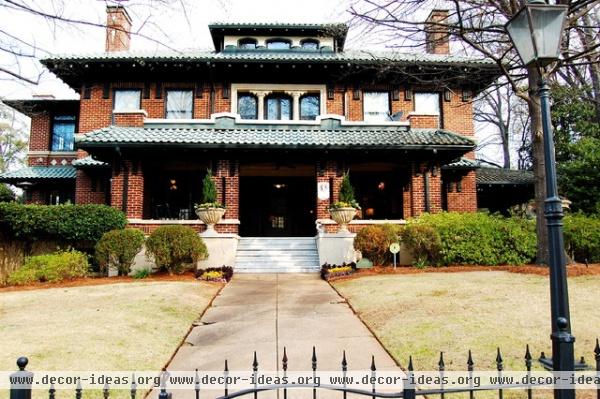
Mission Details
Americans were adopting many different residential styles around 1900. In California they turned to Spanish missions for inspiration, and the style spread in modest numbers to other parts of the country. This Birmingham, Alabama, house exhibits several different stylistic traits, but the tile and front porch roof with parapet are clear identifiers of mission architecture.
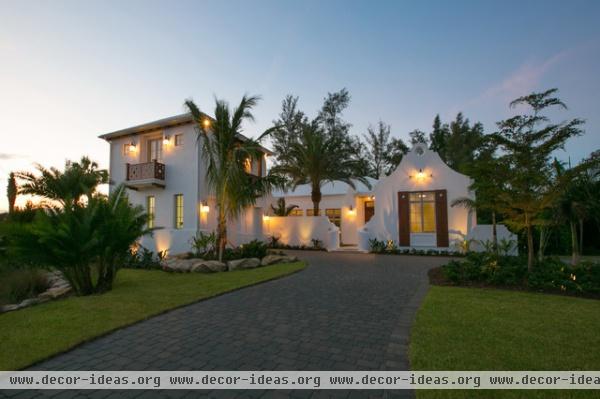
Note the mission-inspired wall detail on the right side of this newer Florida home's elevation. The two-story element on the left lightly alludes to bell towers seen on some early-20th-century examples. Florida is another area heavily influenced and defined by Mediterranean styles.
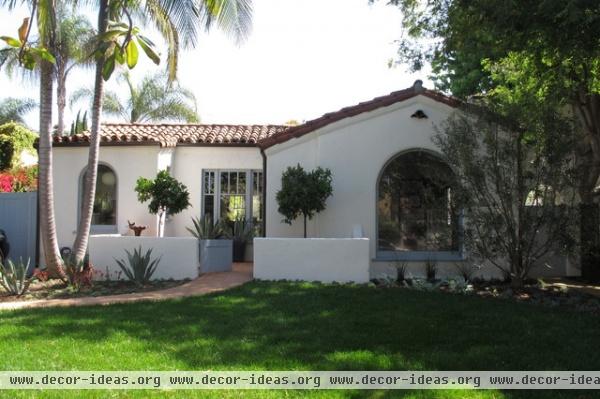
Spanish Eclectic
All of the Spanish-influenced styles are considered to be Mediterranean, but most are more specifically identified as Spanish eclectic. Early-20th-century examples, such as this Los Angeles house, borrowed from several cultures and interpreted details in modern ways. Note the large, arched picture window, behind which the living room is commonly placed. There are thousands of these throughout California, and the prominent living room window comes in many variations, including parabolic shapes.
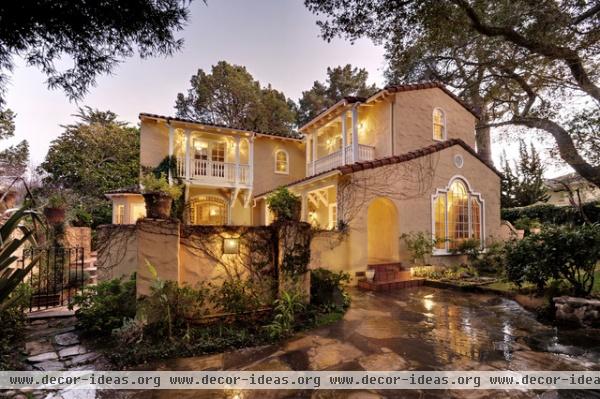
In this more elaborate Spanish eclectic house in the San Francisco Bay Area, the two-story freely formed elevation appears to be a village unto itself. Heavily textured stucco, cantilevered balconies, varying window shapes and sizes, and especially the mission-inspired window arrangement in the forward-right elevation generously contribute to a rich experience.
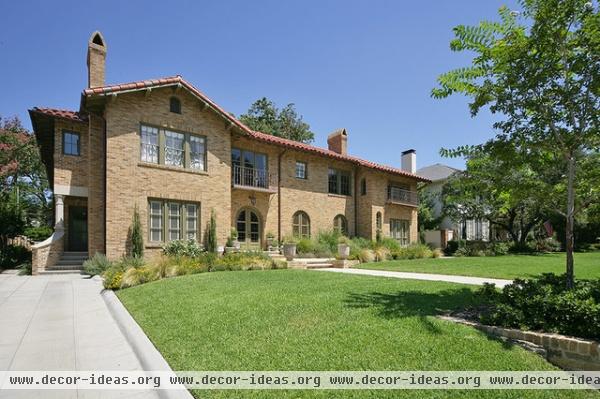
Texas is also home to quite a few Spanish eclectic designs, though brick veneer is the preferred exterior wall cladding in this region, as seen on this Dallas house. Note the roof-like structure on the chimneys. Individually detailed chimney caps are a key Spanish eclectic element.
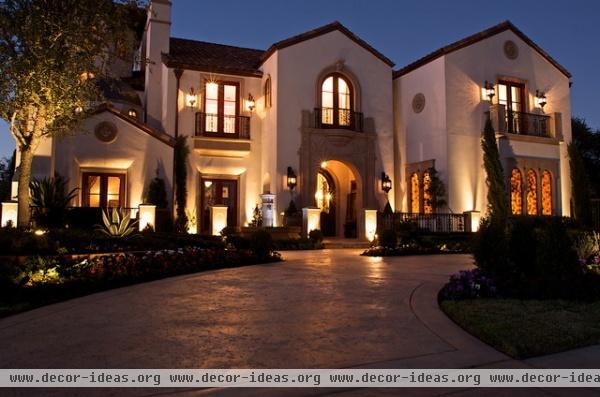
This new house exuberantly emulates early-20th-century Spanish eclectic examples. An elaborately detailed entrance surround leans toward Italian Renaissance inspiration, while wrought iron railings and carefully placed cast medallions and lighting fixtures contribute to a significantly detailed asymmetrical elevation.
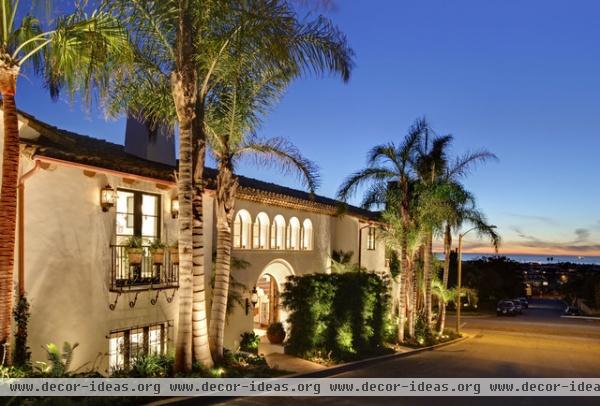
This coastal California Spanish eclectic design is positioned very near the street. More often such examples have a far more private exposure to the public area than does this example. Yet, as seen in the next photo, the house is designed in a traditional fashion to enclose a fantastically beautiful and private courtyard.
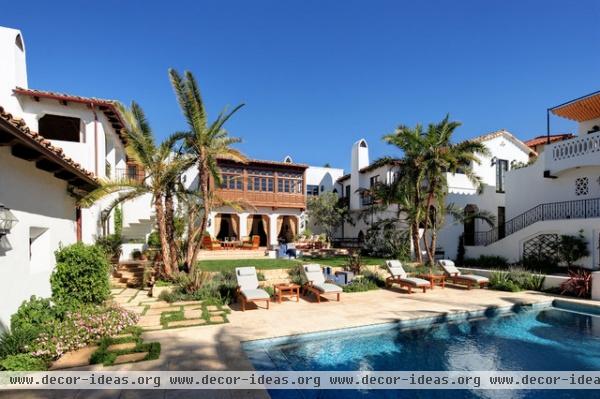
The resort feeling of this space should be familiar to many. This style of architecture was and still is a favored theme for luxury hotel and resort properties. The very similar mission style was also popular for this type of property.
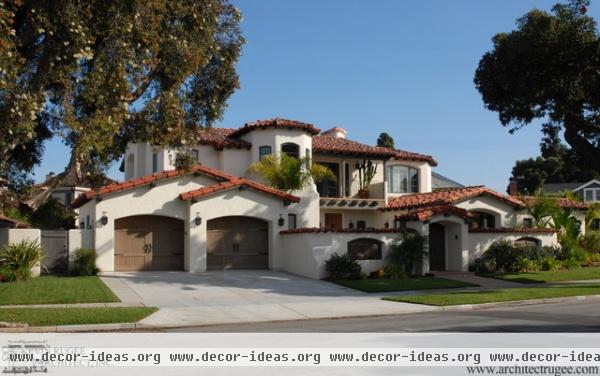
This newer suburban house demonstrates how far Mediterranean-inspired architecture has extended into American home design. It is probably safe to say that more Southern California neighborhoods are of this type than any other.
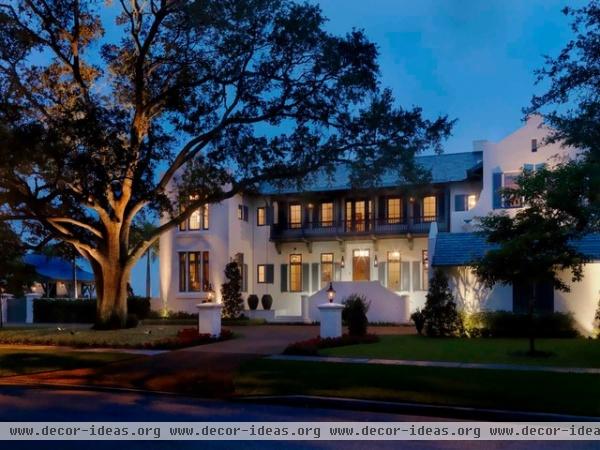
Monterey Colonial
Monterey colonial, another 19th-century style, developed in the colonial capital of California, merging Greek revival cues with Spanish characteristics. The signature of this style is a full-width cantilevered balcony on the front elevation overhanging the entrance. This example, though a modern version, illustrates this trait.
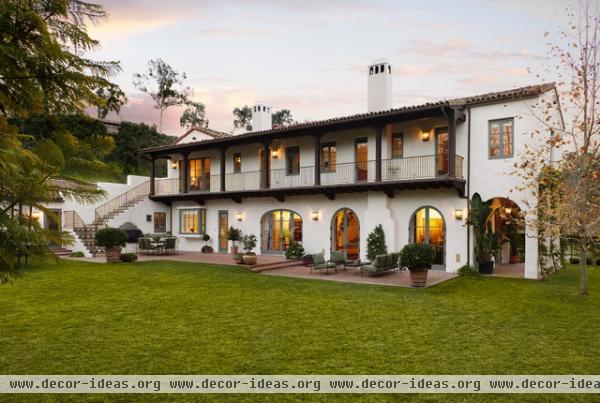
The link to Greek revival is quite loosely interpreted in most cases but is signified by the use of wood columns. This newer house has its Monterey colonial balcony on the rear elevation. Though this style designation is not as well known, chances are that you have seen houses with a mixture of stucco, brick and wood siding; wood shingle roofs; and the cantilevered balcony on the street-facing facade.
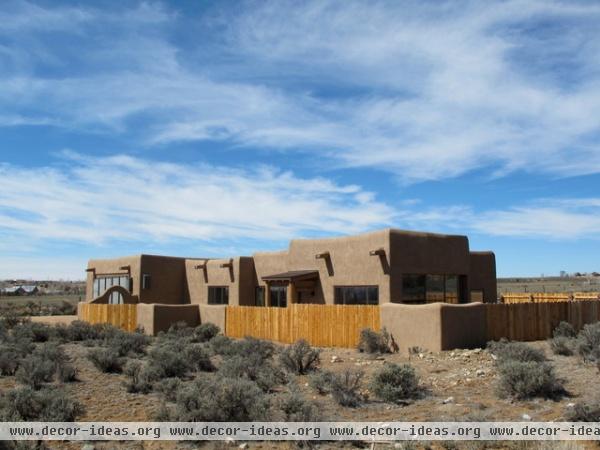
Pueblo Revival
Adobe bricks were a primary building material for Native Americans long before the colonists arrived. However, the use of adobe is nearly extinct, due to its high maintenance and the ease and efficiency of wood-frame construction. But this has not deterred those wanting the indigenous aesthetic of adobe structures. Particularly in the areas of northern New Mexico and many places in Arizona, this is the accepted and, in some cases, required vernacular. The home here is a contemporary version of what can best be classified as pueblo revival.
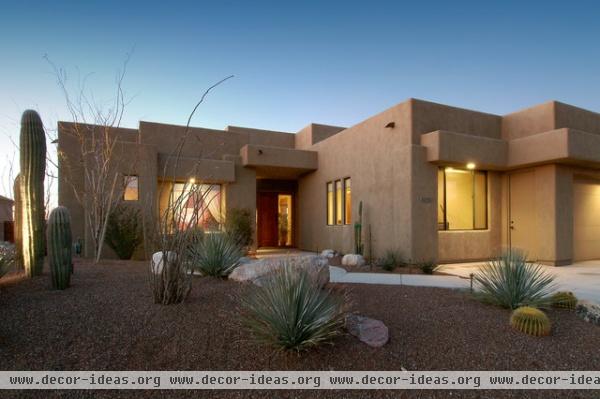
Considering the previous photo, it is not difficult to see the inspiration for this modern desert house. You can see the disciplines of modern architecture — crisp lines — merging with influences from the past.
Though this style is attributed to prior Native American dwellings, its attributes are found in Mexico, Spain and North Africa, as previously mentioned, confirming its link to other Mediterranean styles.
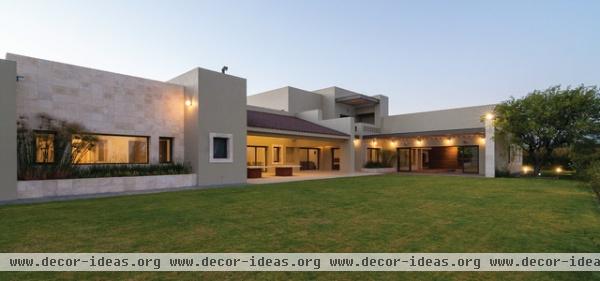
Mexican Modern
Two well-known Mexican architects of the past century are Luis Barragán and Ricardo Legorreta. Their designs emphasize block-like solid masses using color and texture to prompt a delightful dance of light and shade.
With similar traits, the next three houses could perhaps be classified as Mexican modern. Notice the tiled shed roof among a series of rectilinear forms in this example. The shed roof can be traced back to some of the most basic colonial-era Spanish dwellings.
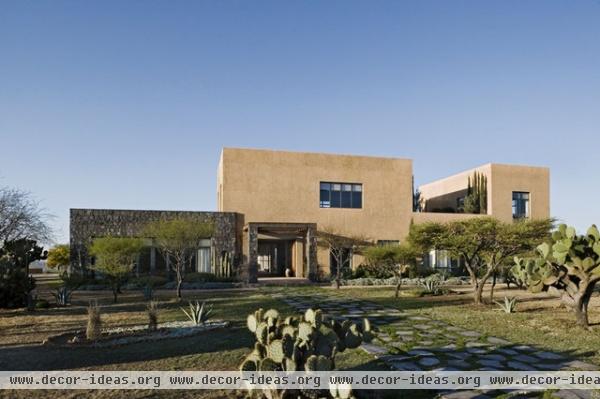
Notice the feeling of solidity in the composition of this Mexican house, similar to the effect achieved by original pueblos.
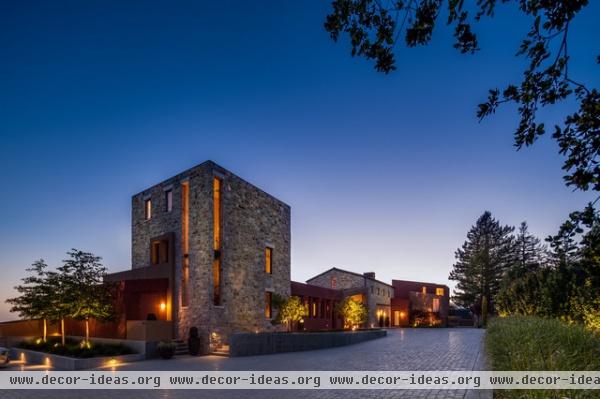
Here the use of color and texture, along with the varying forms, alludes to the cluster arrangement of adobe villages.
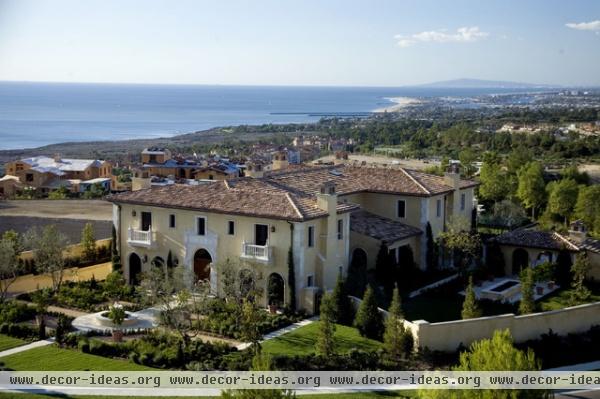
As seen in this coastline setting in Orange County, California, the impression left by Spanish architecture is far reaching, and it is still a significant motivator in the vernacular of Southern California.
Next: See how modern styles emerged in the 20th century












